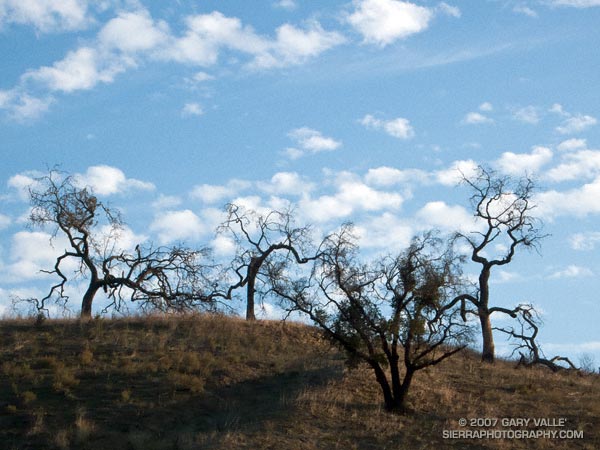
From a run at Upper Las Virgenes Canyon Open Space Preserve (formerly Ahmanson Ranch). Note the hawk in the tree on the left.

From a run at Upper Las Virgenes Canyon Open Space Preserve (formerly Ahmanson Ranch). Note the hawk in the tree on the left.
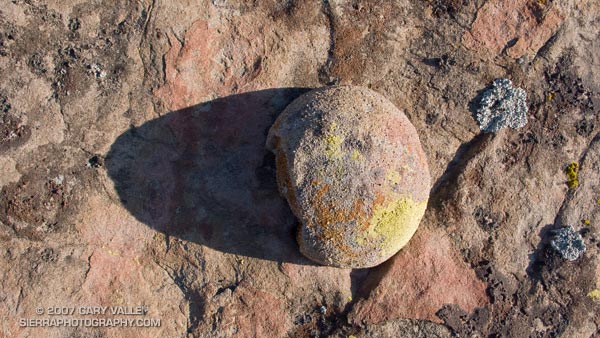
From a run at Sage Ranch. (A 16:9 format image.)
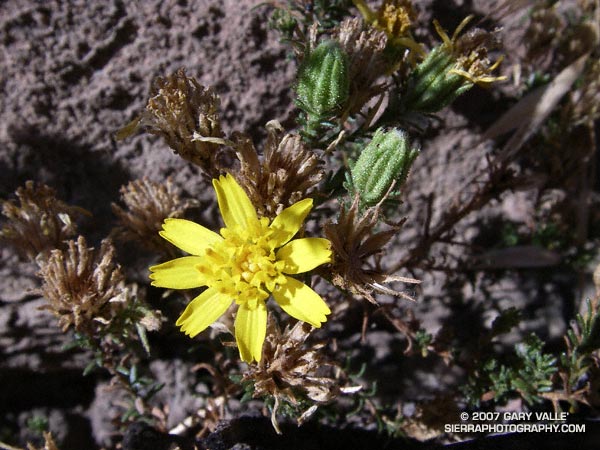
Listed by the California Native Plant Society as being rare, threatened, or endangered, Santa Susana tarweed (Deinandra minthornii) can be found where sandstone outcrops of the Chatsworth formation occur, such as in the Santa Susana Pass area in the Simi Hills.
This photograph was taken on a run at Sage Ranch on October 1, 2007.
Note: Treated as Hemizonia minthornii in the 1993 Jepson Manual.
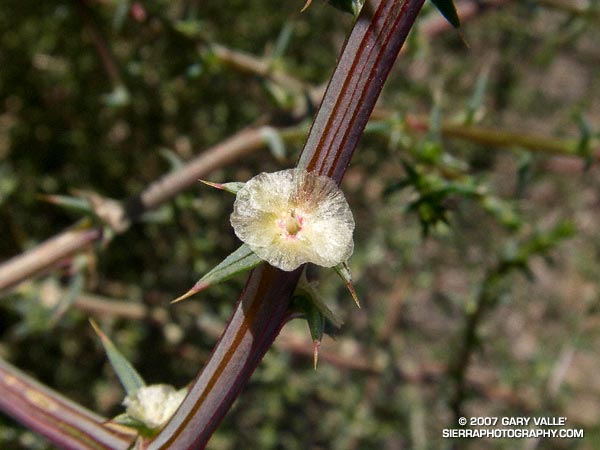
Maybe it’s the result of record low rainfall, or the 2005 Topanga Fire, or a combination of the two — there has been a dramatic increase in the amount of tumbleweed (Salsola tragus) along the dirt roads in Upper Las Virgenes Canyon Open Space Preserve (formerly Ahmanson Ranch).
Like black mustard, and milk thistle, tumbleweed is an invasive plant. According to UC IPM Online tumbleweed is native to southeastern Russia and western Siberia and was first introduced into the United States (South Dakota) in 1873.
The photograph of the tumbleweed flower was taken on a run at Ahmanson Ranch on October 3, 2007.
Some related posts: Dealing With Drought, Milk Thistle Seed Heads, Curly Dock
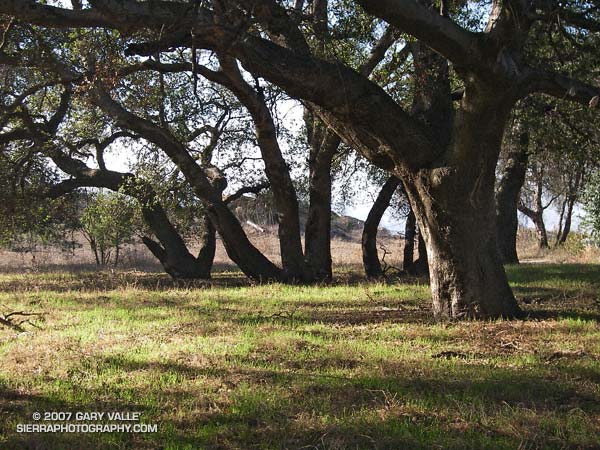
Updated January 10, 2008. The ESRL-PSD Composite ENSO plots page was updated today to correct an issue that resulted in the wrong set of years being used for its Winter La Nina composites. As a result the La Nina composite precipitation map in this post has been updated.
Grasses sprouting as a result of our record setting September rainstorm have brushed our sun parched hills, fields, and woodlands with pleasing hints of green. Whether these areas will remain green depends on how much rain we receive this Fall and Winter.
According to the Climate Prediction Center’s Weekly ENSO Update, issued October 1, La Niña conditions are present across the tropical Pacific and are likely to persist through early 2008. As a result, several longer range U.S. precipitation outlooks are similar to this Nov-Dec-Jan Precipitation Outlook, issued September 20 by the CPC.
The precipitation pattern projected for the western U.S. is typical of a La Niña, with an increased chance of higher than normal precipitation in the Pacific northwest and an increased chance of lower than normal precipitation in the southwest.
The September 20 CPC outlook indicates an “equal chance” of below normal, near normal, or above normal precipitation in the Los Angeles area. However, the La Niña has strengthened recently, so the next precipitation outlook may reflect a more pessimistic projection of Los Angeles area rainfall.
As mentioned above, the ESRL-PSD Composite ENSO plots page was updated today to correct an issue that resulted in the wrong set of years being used for its Winter La Nina composites. This updated precipitation map shows the mean Nov-Mar precipitation for the U.S. during 9 La Niña events from 1948 to the present. Note that the average La Niña rainfall indicated for coastal Southern California is in the 7.0-10.5 inch range, rather than the 10-15 inch range previously indicated in the ESRL-PSD graphic.
The two driest water years recorded in Los Angeles since 1877 have occurred in the last seven years. During the most recent, from Jul 2006 to June 2007, downtown Los Angeles (USC) measured only 3.21 inches of rain. In that context 10-15 inches sounds quite wet! We’ll see.
The photograph of new grass sprouting amid oaks is from a run at Sage Ranch on October 1, 2007.
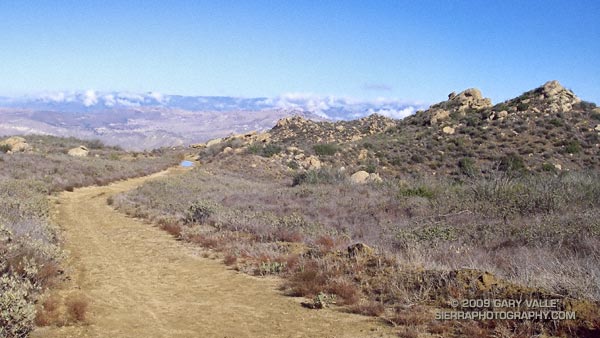
Los Angeles sometimes gets rain in September, but usually it is the result of tropical moisture from a dissipating hurricane, or perhaps the passage of the tail end of a weakening front. It is rare to see a low as cold, deep and energetic as the upper level low that deluged many areas of Los Angeles county Friday afternoon into Saturday.
Thunderstorms raked the San Fernando Valley Friday night, and several locations in and around the Valley recorded more than an inch of rain over the course of the storm. Los Angeles set a new rainfall record on Saturday, recording 0.40 inch of rain, and rainfall records were broken across the area.
In Southern California the first rain of the season often doesn’t occur until October or November and is always savored. Especially this year, when Los Angeles has recorded only 3.21 inches of rain in the last 15 or 16 months, and a developing La Nina threatens to put the kibosh on Winter rain.
I celebrated the rain by doing an out and back run to “Fossil Point” on Rocky Peak fire road. Based on the size of the mud puddles on the dirt road, this unseasonable storm appeared to be wetter than any in last year’s record dry rain season. Here’s a panorama of the view northwest from the fire road to Oak Ridge, the Santa Susana Mountains and beyond.
Some related posts: San Fernando Valley from Rocky Peak, Rainy Morning on Rocky Peak Road.